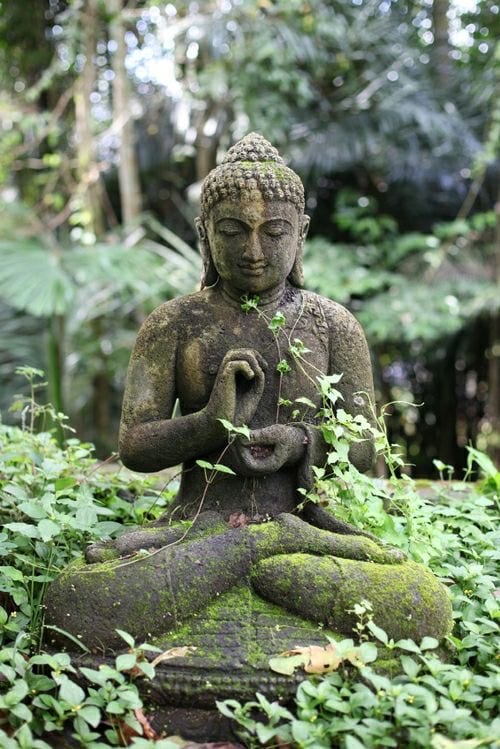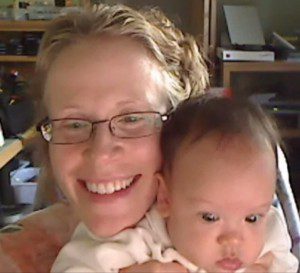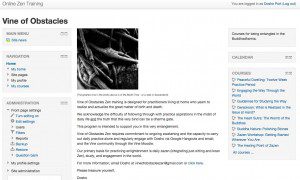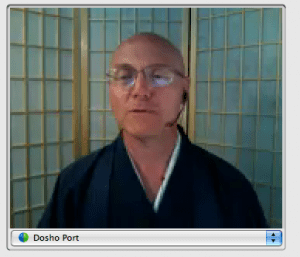
Let me insert a short note about monastic practice here. In my view, monastic practice is an enormously important experience for any Zen student. Notably, the monastic narrative runs deep in our tradition. My own monastic experiences at Hōkyōji and Bukkokuji where essential to my process. And I encourage anyone with life circumstances that allow it to dive into monastic practice. However, during the past 40 years, although there has been dramatic growth in the number of householder Zen students, the number of monastic practitioners has remained almost what it was in 1980. Why?
Most people that are interested in Zen practice now do not have life circumstances that allow for dropping everything and going up the mountain (unless they drop children, spouses, and careers as well) and so other forms practice are clearly necessary. I’d like to see those forms of practice legitimized in order to tune down the impact that the monastic fantasy has on householder practitioners. That fantasy runs something like this: “If only I was doing monastic practice, then I could sit in samadhi, experience kenshō, live in peace and harmony….”
Nevertheless, if you’d like to hear some of my stories about my early period of my training in the old Zen Center modle, and some monastic ones too, check out this podcast from Corey Hess’ “Zen Embodiment”:
Although training in the old Zen Center model was excellent, it was difficult for students to take good care of their home lives, particularly for those with partners and children. The partners of Zen students who were engaged in this model often reported feeling like their partner was having an affair. Indeed, for many of us, it was like that – our hearts were as divided as our time. I know mine was.
Since those early days, there has been a large and not-often discussed shift in what I think of as the “Zen Center model,” concomitant with the first generations of Westerners emerging as Zen teachers, and a dramatic increase in the number of Zen Centers. Simply put, many Zen Centers are now more like Christian churches than the early Zen training centers. Members attend a gathering at most once a week, practice in-between is spotty and largely unsupported, and that practice is often based on the Boomer philosophy of “do whatever feels right for you.”
In addition, there are now a plethora of resources available for practice advice, including books, websites, and social media, so that many students – or perhaps “members” is a more fitting label – now practice with minimal direct supervision from a teacher. Some members, of course, are more engaged in practice and volunteering, and there are usually circles of participation that extend from a core group of students outward to the casual visitor.
Granted, there is considerable variations to this model when we look at any particular group. What I’m aiming for here is a general model and as such it may not fully represent what you’ve experienced in any one group. And as for what constitutes a fair general current Zen Center model, I imagine that opinions will vary.
Be that as it may, I’m suggesting that just as the original Zen Center model took practice from the monastery and into the community, online practice takes another step. Practitioners’ homes become the temple. Their bodies become the stupa. Let me give an example with what we’re doing with the Vine.
What is the Vine of Obstacles: Online Support for Zen Training?
It might not surprise you to hear that, in my view, the Vine is quite different than the current Zen Center model. One of the key differences is that we aspire for everyone involved to work together as a training group. What we’re doing on the Vine then is more like a school (with a small “s” – we have no intention to start a School/Order), a Zen school focused on zazen, study, and engagement that comes with considerable connections with other practitioners and ongoing guidance and feedback from teachers.
In this way, the Vine is more like a late-70s-80’s Zen Center than a church, although we embrace modern technology to allow for a much wider range of offerings than either. The intensiveness of the training, combined with the online format, allows students to do much of their work at home, and their sangha is always as close as their phones. This reduces the impact of the training on home life that was such a negative aspect of the early in-person Zen Center model described above.
In addition, the Vine is explicitly for people who want to go deeply into the work, and not so much for people who want to explore if Zen might be right for them, or for whom belongingness needs are paramount. We also aren’t primarily directed toward those interested in well-being. There’s nothing wrong with exploring, belonging, and well-being of course. And for some people, exploring, belonging, and well-being are enough. I have no argument with that. However, Tetsugan Osho and I, along with Ed Goshin, assistant teacher on the Vine, choose to focus our time and energy working with people who have already crossed the threshold into Zen, who have aroused the Way seeking mind, who have some sense of Great Doubt, and are ready to jump into Zen training in order to realize the ground of being.
For us, that training includes:
- Zazen: at least one hour of daily sitting either with breath practice or the keyword method of kōan introspection
- Weekly practice meetings with one of the teachers
- Participation in the Engagement forums
- Studying selected works that emphasize classical Zen sources, through group study practice
As we say,
“The Vine is designed for those who are determined to awaken (kenshō) and actualize the great matter of life and death (post-kenshō training). And, who aren’t shy about it.”
An important aspect of Vine training is participation in the forums. We use forums both for general discussions and as the basis of dharma study. The forums have become increasingly important over the years both as a place for students to receive peer support, and for teachers to give practice pointers to students based on how students are showing up. Through involvement in the forums, Vine students get to know much more about each others’ lives and practices than in the in-person communities that I’ve been involved with, either as a teacher or a student. Students also receive at least as much guidance and feedback as students are likely to receive in in-person communities. Finally, although this guidance and feedback arises in an online context, it is much the same that students receive in in-person training.
Another difference between the Vine and the current Zen Center model is that the latter is based on membership contributions and the former is a tuition-based program. Offering this intensive householder training comes with a cost. In order to spend our time in this way, Tetsugan Osho and I have given up other occupations. But our landlord, grocery store, and utility companies haven’t given up being compensated for their services. So students pay a monthly tuition fee to access the training, although we sometimes make allowances for students who have limited financial means.

And the future?
One consideration for me is that as I approach 65 years on this planet, I’m aware that my teaching shelf life might be in the ten-year range. Given that limitation, it is important to me to continue the process I began with my upcoming book, The Record of Empty Hall: One Hundred Classic Koans (now available for preorder), that is, doing what I can to share some of the deep wealth of dharma resources of the Zen tradition, much of which has yet to be translated and made available in English. I estimate that less than ten percent of the Taishō Tripitika has been translated. My next project is “Going Through the Mystery’s One Hundred Questions,” but that’s another story.
In terms of my teaching practice with the Vine, as I said above, I don’t see us going back to the pre-pandemic world with a division between in-person and online groups. Rather, in the post-pandemic world, I see us going in the direction that we started when the Vine was created. That direction has only accelerated during the pandemic – an emphasis on weekly online teacher-student meetings and ongoing study through the Vine Moodle, now supported by sessions like Open Zen, daily Zoom zazen, and online retreats.
The missing ingredient in our pandemic training is in-person seven-day sesshin, but we’ll get those going again as soon as it is safe to do so. We also recommend solo retreats and have begun supporting students in solo retreats by offering guidance before, during (through practice meetings), and afterwards (debriefs can be an essential ingredient of these experiences).
Thanks to the recent changes, I have a renewed sense of what we’re doing and a longer-range vision of what we’ll be offering, including a more clearly articulated and scaffolded curriculum of classic Zen texts. This curriculum entwines with zazen, engagement, and the koan curriculum as well.
What’s the point?
For students, the intended outcome of these offerings is to provide a vehicle for them to settle deeply in the buddhadharma, so that they can live in peace and harmony in daily life, meet the self, other, and the details of this one great life with wholehearted intimacy and delight. In other words, to actualize the Great Vows. This requires a kenshō as clear as the palm of the hand and years of post-kenshō training. A good minimum amount of time for intensive householder training is ten years after kenshō.
We’ve verified through experience that what I’ve outlined above is a reliable way for householders to accomplish the intended outcomes of Zen. The mix of online and in-person work provides a sufficient basis for students to go deeply into the Zen way, at least as well (and probably better, in my view) as the current in-person Zen Center model.
Finally, as with any Zen training endeavor, rites of passage are a vital aspect, rites that acknowledge the work that’s been done – receiving the precepts, ritually acknowledging the transformation that’s taken place (analogous to home-leaver ordination), training as a senior student (analogous to head monk training), and perhaps dharma transmission, if an appropriate person or persons appear.
For me, these offerings are about transmitting to the next generation the dharma that I’ve received from my teachers, especially Katagiri Rōshi and James Myōun Ford Rōshi, toward whom I feel an unrequited debt of gratitude due to their compassionately sharing the dharma with me.
If you are interested in participating in the Vine, contact [email protected].

Dōshō Port began practicing Zen in 1977 and now co-teaches with his wife, Tetsugan Zummach Ōshō, with the Vine of Obstacles: Online Support for Zen Training. Dōshō received dharma transmission from Dainin Katagiri Rōshi and inka shōmei from James Myōun Ford Rōshi in the Harada-Yasutani lineage. Dōshō’s translation and commentary on The Record of Empty Hall: One Hundred Classic Koans is due out in February, 2021 (Shambhala). He is also the author of Keep Me In Your Heart a While: The Haunting Zen of Dainin Katagiri.











